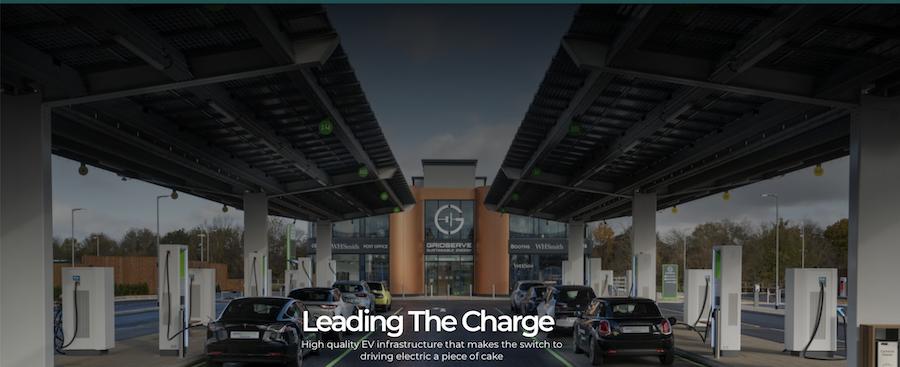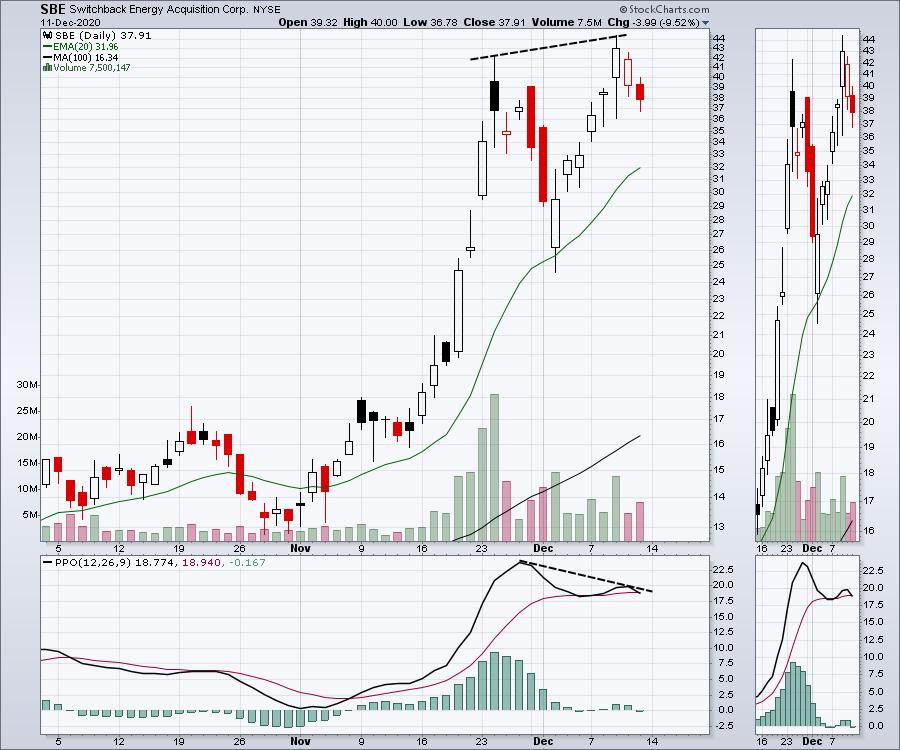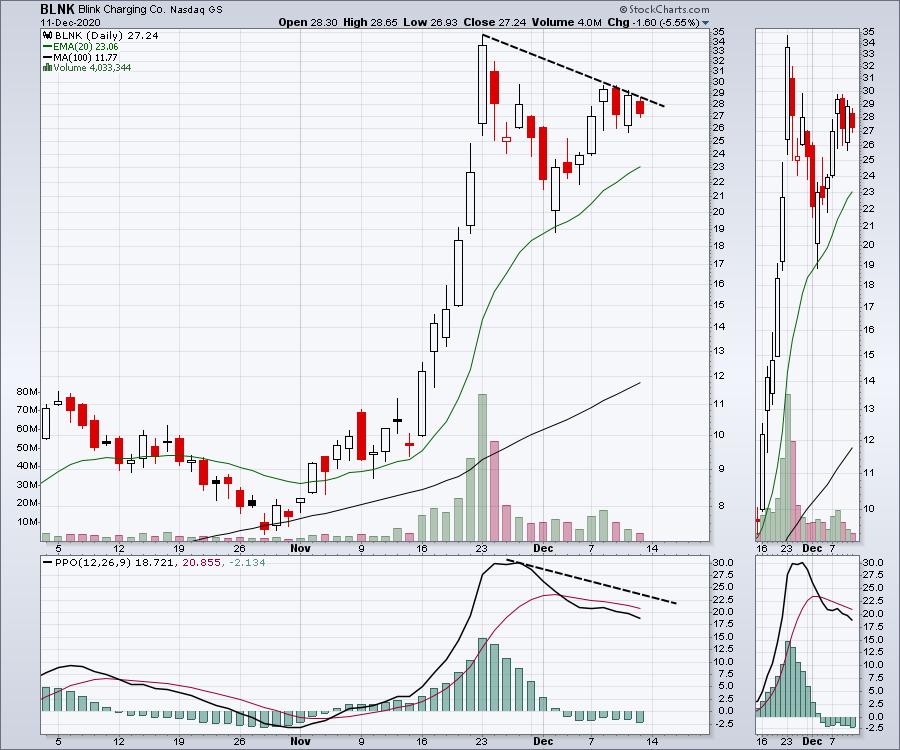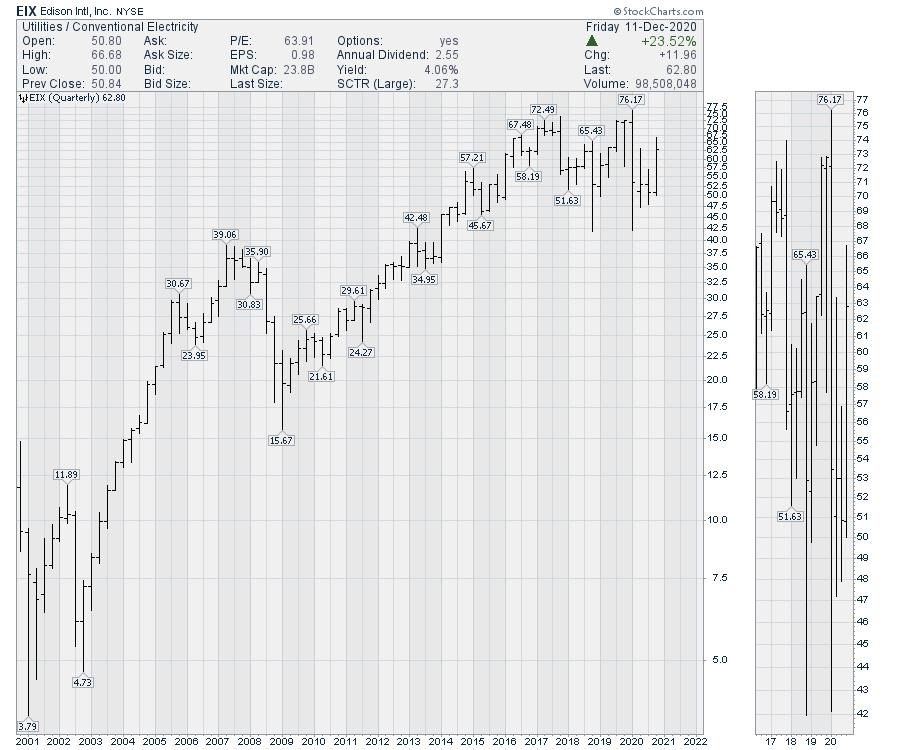Today, I want to cover off one of the things that have to fall into place for the EV movement to really succeed. I was very interested in an article on how the early design of a full-site, electric charging station looks. While this is well thought out, it is a first approach, and they plan on rolling out multiple locations. It will be interesting to see how it evolves. Will we get there?
 Image: Gridserve.com
Image: Gridserve.com
The Bloomberg article I got the link from was here. The Highway Charging Station. The roof panels to protect drivers from the rain, are also solar panels. There is a 6 Mega-watt battery to handle peak loads. There is also a power connection from a ‘hybrid' solar farm. No explanation is given as to what is in a hybrid solar farm, but more research could probably pop that up.
I learned three things from this.
- They are trying to self-produce the power, rather than use grid supply.
- They have their own battery on site and it's a big one.
- They use/need the addition of off-site solar to keep up with demand.
If every site is going to be installing onsite batteries, and their own power generation, it's a remarkable thing to think about. When we think of the number of gas stations in the world, that seems massive. What used to be power at the grid level, is now self-power on the roadside. Is this where we are going? Will we get there? It seems radical to install batteries at every point of power suction.
For the subscribers of my EV newsletter, I highlighted the charging station company charts last week.
I think an important part of the entire grid development is the network of charging stations. While Tesla has built one or more in California, typically it requires the focus on the economics of a site. Not just the charging component, but the usage of the whole site! What will people do for 20 minutes while they charge? Sit in their cars, have Starbucks inside, will site developers trim the site out with food outlets? The NIVO car popping up in social media ads needs 55 minutes for an 80% charge. Do we go to a charging station and watch Kim's Convenience Store reruns, while snacking on a Chipotle Mexican Grille stop? Is charging the new lunch time run? Is this where we are going? Will we get there? Will charging times at 15-20 minutes even be acceptable to the driver that can't be bothered to stop for 5 minutes?
Site design and infrastructure
We are presented with three big choices for site development.
- Current gas station companies transition to add their own proprietary electric charging. ‘The Shell Current'. They are in the real estate business like McDonalds. The value is in the locations, not the burgers. Can they set up for long fill cycles of 1 hour?
- Current electric utilities start setting up electrical power fueling stations. Not really their style. Can they grow into it? Will we get there? Do they have any idea of customer service in person? It takes 6 months to get a building connected that could be done in a day... can you imagine them in the people business?
- Third party companies like ChargePoint and Blink start building standalone sites or tag onto existing real estate locations like your local Shell station or shopping mall. This seems like the most prominent option, but gas and electricity don't mix well nor do multiple vendors on a site. Again, the time spent on the physical site might be the biggest hurdle. Can rapid charge be enough to change the game? How soon will we get there? Do we have on-site electricians?
Charging Providers
Let's examine two of the largest companies in the space. Looking at the industry leaders in away-from-home charging, this is a new industry recently garnering attention by investors. We don't have any long-term charts like we do for conventional electricity companies, but I would suggest the two companies shown are going to be at the forefront of the electric movement. How soon will we get there? While this doesn't give us any sort of predictive power, it is clear that both companies are some of the most sought-after stocks in the EV space. It suggests to me that the importance of this part in the move to EV is critical.
ChargePoint
The chart of ChargePoint has been surging. This is a SPAC (SBE) that brought ChargePoint inside. This is a very short-term chart, with a few months of information.
We have some divergence on the stock after an unbelievable surge like an electricity surge in your house. A serious power blip! We have a lower high on momentum (PPO) with a higher high in price. What does that mean? Typically, we want to see the price moves push up and momentum continues to reach the same high level on each move higher. If the momentum (PPO) on a peak is significantly less than the previous peak, it can be a clue that the stock needs to rest a bit, or may actually need to drop to attract new institutional investors. The questions are how far does the stock pull back to ‘rest' and when will we get there?
Looking at SBE, it bounced off the green 20 day moving average, so that would be some support. But the divergence suggests something bigger. Perhaps it goes down to $25 where it found support before. But that $25 level is $20 off the highs.
This is very volatile price movement and investors need to have a strong stomach to endure the moves both ways. What we want to see is the stock start to level out, and then move into a gentle uptrend. Living with these swings is all part of the difficulty of investing in hot sector stocks.
This divergence can give us a chance to find a lower priced entry. For those not in the stock, this is a clue to be ready and stalking the chart. It might be a day, weeks, months, but keep it on the radar. When will we get there? That is the reason that technicians watch the charts daily and weekly for changes to find the setups with low risk compared to upside reward. Rather than buy it while it is still moving down, we want to wait for bases or price patterns to set up. We are trying to find the lower risk entry to protect capital, not the lower price entry.

Blink
The second largest charging company in America is Blink. The chart shows something different than the chart above. On this chart, the momentum indicator has not made a second bump on its momentum indicator, so I don't have a second point to draw my PPO trend line on yet. While that trendline information is more comfort for a technician, right now the PPO has no second anchor point. If I just use todays momentum close, and the volatile stock starts making more weekly lows, that would be an issue. But clearly, the momentum indicator is pointing down, suggesting the continued loss of momentum on this short daily timeframe. After such a massive surge higher, who would be surprised if the stock takes a break here.

Again, as an investor who is not in the stock yet, we can watch to see when it starts to base and use price patterns to help us enter the stock while controlling our downside risk. We can't do that at an obvious place during the run up where the price has surged 200 %. When will we get there is the question, and for me time and a new chart pattern set up is when I would look to enter.
Government involvement
As the charging market ramps up, and ramp up it will, how this evolves will be an interesting challenge. Governments around the world are throwing money at the charging stations. The new president-elect Joe Biden announced gobs of cash for them. New York State also did. Canada announced more on Friday, with money our children will donate. It would appear that the government world can't wait for the capitalists to start investing to meet demand. That never ends well when government employees get to decide where the charging stations go with other people's money. Paybacks become irrelevant, political locations become relevant.
 Photo:Blinkcharging.com
Photo:Blinkcharging.com
Charging Station Locations
If the move to ramp up charging stations is well under way, I think we need to watch the evolution of the site design to accommodate how long people are there. How big do the sites have to be if everyone is parked there for a long period of time? It is bad enough at gas stations on busy routes. Are the truck stop size lots with hundreds of charging stations the new norm on long interstate travel? When I drive to distant cities with hours and hours of drive time, how many times must I stop and for how long? Will a stall be open? A common question of doubters. Will we get there? Does it add the cost of a night in a hotel?
Other locations
To retrofit parking garages, we will require massive upgrades on power distribution from the grid. If a shopping mall has parking for 2000 cars, what percentage needs a charging station while there? If it is 200 or 300 cars, that is a dramatic draw. Do we need batteries there too? How about hotels, civic facilities, hospitals, movie theatres? What's the infrastructure?
The price of this power
Secondly, the price of this power is going to be a factor. While residential power rates are not a bargain, homeowners buy a Tesla charging pack for $1500, and pay for electricians to wire it in. Somehow all this extra money has to compute into the cost. If we average out the cost of the charger, plus the electrical install, and the power, it has to be somewhat cost competitive in the end. Will we get there with a soaring cost of electricity to build out the charging grid?
To me, I am investing in these charging companies as the primary front for this, but I am interested if the high cost of power from the grid kills the rollout or if users continue to be willing to pay whatever. They have always compared the price of gasoline down to the penny per gallon. Will the Blinks of the world be able to get them charging at the local destination without letting them blink to compare prices to nearby sites?
Location infrastructure on a site by site basis
For inner city setups, building solar panelled rain canopies/sun awnings onsite can help a little, but you need a clear sunlight option without building obstructions blocking the rays. This changes location design as well. It used to be about the direction of the car travel. Now it might be based on sunshine direction.
Redundancy and who pays
What happens in cities like Seattle or Stockholm? Stockholm has not had sun for 10 days. The creativity required for this will be important. If it just comes back to grid power, that will be a massive draw. Who pays for the upgrade to handle that load that isn't there when location solar goes away? Then who pays when there is no solar capture even at grid level and the grid power draw soars for days on end? Does price become extremely volatile? Or does everyone have to invest in batteries? Is this where we are going and when will we get there? Perhaps we are definitely going there, and we are well on our way as the commitment to build out the grid ahead seems nowhere in sight. Investors won't wait. They will build the battery to get on with the project.
The typical electric company
Below is Edison International, a conventional electricity supplier. Each bar on this chart is a ¼ of a year. A special feature on StockCharts.com. Two things I notice on the chart.
- The stock price trend has been rising for 20 years.
- The economic slowdown starting with 2018 and then the COVID crisis has really impaired the long-term chart.
Typically for developers with massive upfront costs, they go to the bond market to finance the project, but the stock does not move up in value until it can start to see the change in revenue a year out. Once analysts start modelling the additional revenue, it comes on the radar, but it still depends on local hurdles and a smooth startup for the revenues to be high enough to actually show a profit after this effort. The larger the company, the more the continuous capital expense and mature project revenue match each other with multiple projects coming onstream at different times. However, we have grid utility companies in bankruptcy now (Pacific Gas and Electric- PCG). How do they build forward? This is an example of the different types of power entities in California. Load Serving Entities. Who coordinates this effort and how do we avoid batteries everywhere?
 If grid capacity has to double as our front man for EV (Elon Musk) suggests, does this chart springboard up? The capital to build out the grid in advance needs to come from somewhere especially if solar farms and wind farms have a shelf life of 10-15 years. A new solar or wind project finished in 2020 would need to be rebuilt/retrofitted in 2035. That is dramatically different than long life assets like hydro dams or natural gas generators.
If grid capacity has to double as our front man for EV (Elon Musk) suggests, does this chart springboard up? The capital to build out the grid in advance needs to come from somewhere especially if solar farms and wind farms have a shelf life of 10-15 years. A new solar or wind project finished in 2020 would need to be rebuilt/retrofitted in 2035. That is dramatically different than long life assets like hydro dams or natural gas generators.
The point is not to paste all the problems inside the move to green here. It is to be aware as an investor, what we are navigating through.
What I am wrestling with is: Will the upfront capital cost to expand the grid stall this utility company chart for years, or will power costs soar to prepay the increase in grid capacity? We cannot get to the point where travel mobility is stopped. Brownouts are already frustrating. How do we right size the grid?
Batteries to adjust for changing demand
Now it would appear building redundant battery capacity is required because the grids are dramatically short on capacity. If each homeowner has to make this investment, both in solar capture and power storage, we are well on our way to a massive waste of efficient capital but it might be more stable as a final distributed power supply system. Massively ramping the number of batteries all the way to a house level around the globe seems remarkably short-sighted. This is all because the grid owners (power utilities) are not keeping up with demand and managing with brown outs/black outs. What about batteries at a neighborhood level rather than a house level? How does that get built out? Will we get there with the utilities helping this, and can government get their executives to be helping the green movement with macro neighborhood facilities? Solar on the roofs of homes takes the land cost and the grid connection costs out of the way, so we only have the panel array cost rather than all three. Regionalized batteries would be a giant step forward. Or will it be a bunch of competing strategies?
The move to green is all about improving the environment but building batteries like the 6 MW battery in the Gridserve system (above) at every multipoint charging outlet distribution point to avoid the high cost of real-time electrical grid demand pricing seems like one of the most expensive, environmentally damaging approaches for a global buildout that we can take. Investors will do what it takes to get the projects going. I think the question of will we get there when we talk about all the locations and the action behind the scenes gets answered with a hard yes, but not in the best way for the environment. The few that are in place now works, but we only have 1 % of the cars on the road with a charge requirement.
For now, my charts suggest the best way to play it is through the charging companies, but we will need to see if the power costs/grid connection/infrastructure from the electrical companies is too prohibitive to make the rollout work inner city. Or if the governments pay for all the infrastructure, then will the charging companies just get a throughput fee between electric cost and selling cost? That isn't very beneficial for growth investors. Will we get there with a government defined model? How does that fit with the poorly constructed load and redundancy on the existing electrical grid? Be ready to change as this development unfolds.
New issues
I want to point out another factor that has to enter the grid demand scenario. In December 2020, a city in California banned natural gas use in homes at a date in the future and wants to stop all new developments from using any natural gas in the design. That means the electrical power consumption into homes is already going to ramp up without the car charging systems. Stoves, hot water tanks, dryers and furnaces are all dramatic draws because they supply high levels of on-demand heat like a hair dryer on a switch but on a larger scale.
The power grid needs to adapt to that, and this is going to be coincident with the addition of home charging for cars. Heating/cooling is expensive, electrically. Most homes need to double the amperage available. A home with natural gas furnace, a natural gas hot water heater, and perhaps a natural gas stove might use a 100-amp breaker like my home. An all-electric home might need a 200-amp breaker, like a home where natural gas is not available. Lots of questions on this route to 2021 and the question of how will we get there is rapidly upon us.
Conclusion
This article isn't to present the hurdles in front of us. Some may criticize the points made in the article. That is missing the point as investors. We need to be aware of the dynamically shifting landscape we are moving through. Some of the above may not come to pass. Perhaps we move to geothermal as an example. But we need to be prepared for the changes. Once investors start to take a different approach, it shows up on the charts with volume and price action like the charging company charts above. Will we get there and can we be onboard in a timely fashion to participate on this network expansion? I think so, as the world seemingly wants the all-electric world as a sort of visual fountain of hope for the climate. What needs to happen behind the scenes is an epic shift. The charts are the clearest visual way to navigate through the vibrant backdrop.
In this changing world, investors will need to be nimble and watch for changing opportunities. That is what the EV Newsletter is all about at GregSchnell.com. If you are interested, take a look to see if there is anything for you there.
Good trading,
Greg Schnell, CMT, MFTA
Senior Technical Analyst, StockCharts.com
Author, Stock Charts For Dummies
Want to stay on top of the market's latest intermarket signals?
– Follow @SchnellInvestor on Twitter
– Connect with Greg on LinkedIn
– Subscribe to The Canadian Technician
– Email at info@gregschnell.com






